"Even within the framework of the three great Iranian, Jewish and Christian religions, which have limited the duration of the cosmos to a certain number of millennia, and affirm that history will definitively cease in illo tempore, there are traces of the ancient doctrine of the periodic regeneration of history »: Very ancient doctrine that Eliade, in his essay“ The myth of the eternal return ”, finds in the Babylonian, Hindu, Buddhist, Germanic and Hellenic tradition.
di Mircea eliade
taken from "The myth of the eternal return", 1949, chap. III, "« Pain »and« history »"
The meaning acquired by "history" in the context of the various archaic civilizations is never revealed to us so clearly as in the theory of the "great time", that is, of the great ones cosmic cycles […]. We have to talk about it again, because in this case two distinct orientations are specified for the first time: the traditional one, foreseen (without ever being clearly formulated) in all "primitive" cultures, that of cyclic time which regenerates periodically ad infinitum; the other, "modern", from finite time, fragment (although it is also cyclical) between two timeless infinities.
Almost everywhere these theories of the "great time" are found in conjunction with the myth of later ages, since L'"golden age» is always found at the beginning of the cycle, near theillud tempus paradigmatic. In the two doctrines - that of infinite cyclic time and that of limited cyclic time - this golden age is recoverable, in other words, it is repeatable an infinity of times in the first doctrine, only once in the other. We remember these facts not for their intrinsic interest, which is no doubt considerable, but to clarify the meaning of "history" from the point of view of each doctrine. We will start with Hindu tradition, because precisely in it the myth of eternal repetition has found its boldest formulation.
The belief in the destruction and in the periodic creation of the universe is already in theAtharvaveda (10,8, 39-40). The preservation of similar ideas in the Germanic tradition (universal conflagration, ragnarok, followed by a new creation) confirms the Indo-Aryan structure of this myth, which can therefore be considered as one of the numerous variants of the archetype [...] (any oriental influences on Germanic mythology do not necessarily destroy the authenticity and autochthonous character of the myth of ragnarok. On the other hand, it would be difficult to explain why the Indo-Aryans did not, from the time of their common prehistory, also share the conception of time with the other "primitives").

Hindu speculation, However, it amplifies and orchestrates the rhythms that command the periodicity of cosmic creations and destructions. The unit of measurement of the smallest cycle is lo Yuga, the age". One Yuga it is preceded and followed by an "dawn" and a "twilight" which unite the "ages". A full cycle, or mahayuga, is made up of four "ages" of unequal duration, with the longest age at the beginning and the shortest at the end. Thus the first "age", the krita-yuga, it lasts four thousand years, plus four hundred years of "dawn" and the same number of "twilight"; then follow treta-yuga, three thousand years old, dvapara-yuga of two thousand years e kali-yuga of a thousand years (plus, of course, the corresponding "auroras" and "twilight"). So a mahayuga lasts twelve thousand years (Manu, 1, 69 ff .; Mahabharata, 3. 12. 826).
At the progressive decreases in the duration of each new Yuga corresponds, on the human level, to a decrease in the duration of life, accompanied by a relaxation of morals and a decline in intelligence. This decay continues on all levels - biological, intellectual, ethical, social, etc. - acquires more particularly prominence in the Puranic texts (cf. for example Vàyu Purana, 1,8; Vishnu Purana, 6,3). The passage from one Yuga to the other occurs, as we have seen, during a "dusk" which marks a decreasing within each one as well Yuga, as each of them ends with a period of darkness. As we approach the end of the cycle, that is, the end of the fourth and last Yuga, the "darkness" deepens. Il kali yuga, the one in which we find ourselves at present, is considered precisely the "age of darkness". The complete cycle ends with a "dissolution", a pralaya, which is repeated in a more radical way (mahapralaya, the "great dissolution") at the end of the thousandth cycle.
H. Jacobi rightly believes that, in the original doctrine, one Yuga it amounted to a complete cycle comprising the birth, "wear" and destruction of the universe. On the other hand, such a doctrine was closer to archetypal myth, of lunar structure […]. Further speculation has only expanded and infinitely reproduced the primordial rhythm "Creation-destruction-creation", projecting the unit of measure, lo Yuga, in ever larger cycles. The twelve thousand years of a mahayuga they have been considered as "divine years," each with a duration of three hundred and sixty years, and this gives a total of 4.320.000 years for a single cosmic cycle. A thousand of these mahayuga constitute a kalpas; 14 kalpas form a manvantara.
Un kalpas it is equivalent to one day in the life of Brahma; another kalpas to one night. One hundred of these "Years" of Brahma constitute his life. But this considerable duration of Brahma's life does not, however, run out of time, since the gods are not eternal and cosmic creations and destructions follow one another ad infinitum (on the other hand, other calculation systems still extend the corresponding durations to a much greater extent). Of all this avalanche of numbers, it is only necessary to recall the cyclical character of cosmic time. In fact we are witnessing the infinite repetition of the same phenomenon (creation-destruction-recreation) foreboding in each Yuga ("Dawn" and "twilight"), but made entirely by a mahayuga. Brahma's life thus includes 2.560.000 of these mahayuga, and each of them resumes the same stages (chalk, Treta, dvapara, kali) and ends with a pralaya, ragnarok (the "definitive" destruction, in the sense of a regression of all forms into an amorphous mass which happens at the end of each kalpas at the time of mahapralaya).
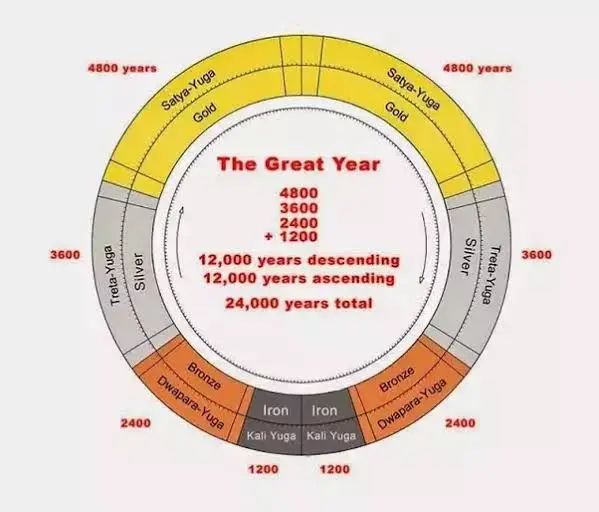
In addition to metaphysical depreciation of history - which, in proportion and by the mere fact of its duration, causes an erosion of all forms, exhausting their ontological substance - and in addition to the myth of the perfection of the beginnings, which we also find here (the myth of paradise that is gradually lost, for the simple fact that it is realized, that takes shape and lasts), deserves to stop our attention, in this orgy of numbers, the eternal repetition of the fundamental rhythm of the cosmos: its periodic destruction and re-creation. Man can detach himself from this cycle without beginning or end only with an act of spiritual freedom (since all Hindu soteriological solutions boil down to preliminary liberation from cosmic illusion and spiritual freedom).
The two great heterodoxies, il Buddhism and Jainism, accept in its broad outline the same pan-Hindu doctrine of cyclical time and compare it to one wheel with twelve spokes (this image is already used in the Vedic texts, cf. Atharvaveda, 10,8,4; Rigveda, 1,164,115, etc.). Buddhism adopts the unit of measurement of cosmic cycles kalpas (pali: kappa), divided into a variable number of "Incalculable" (asamkheyya, poles: asankheyya). The Pali sources generally speak of four asankheyya and a hundred thousand kappa (see for example Jataka, 1, p. 2); in literature mahayànica, the number of "incalculables" varies between 3, 7 and 33, and are related to the path of the Boddhisattva in the different cosmoses.
The progressive decline of man is marked in the Buddhist tradition by a continuous decrease in the duration of human life. So, second Dighanikaya, 2,2-7, at the time of the first Buddha, Vipassi, who made his appearance 91 kappa now, the duration of human life was 80.000 years; to that of the second Buddha, Sikhi (31 kappa or are) 70.000 years old, and so on. The seventh Buddha, Gotama, appears when human life is only a hundred years old, that is, it is reduced to its extreme limit. (we will find the same motif in the Iranian and Christian apocalypses). Hence, for Buddhism, as for all Hindu speculation, time is unlimited; And the Boddhisattva will incarnate, to announce the good news of salvation, for all beings, in aeternum.
The only possibility to get out of time, to break the iron circle of existences, is the abolition of the human condition and the conquest of Nirvana. On the other hand, all these "incalculable" and all these numberless aeons also have one soteriological function; the mere contemplation of their landscape terrifies man and forces him to convince himself that he must restart this same evanescent existence billions of times and endure the same sufferings without end, and this has the effect of exacerbating his will to escape, that is to push him to definitively transcend its "existing" condition.
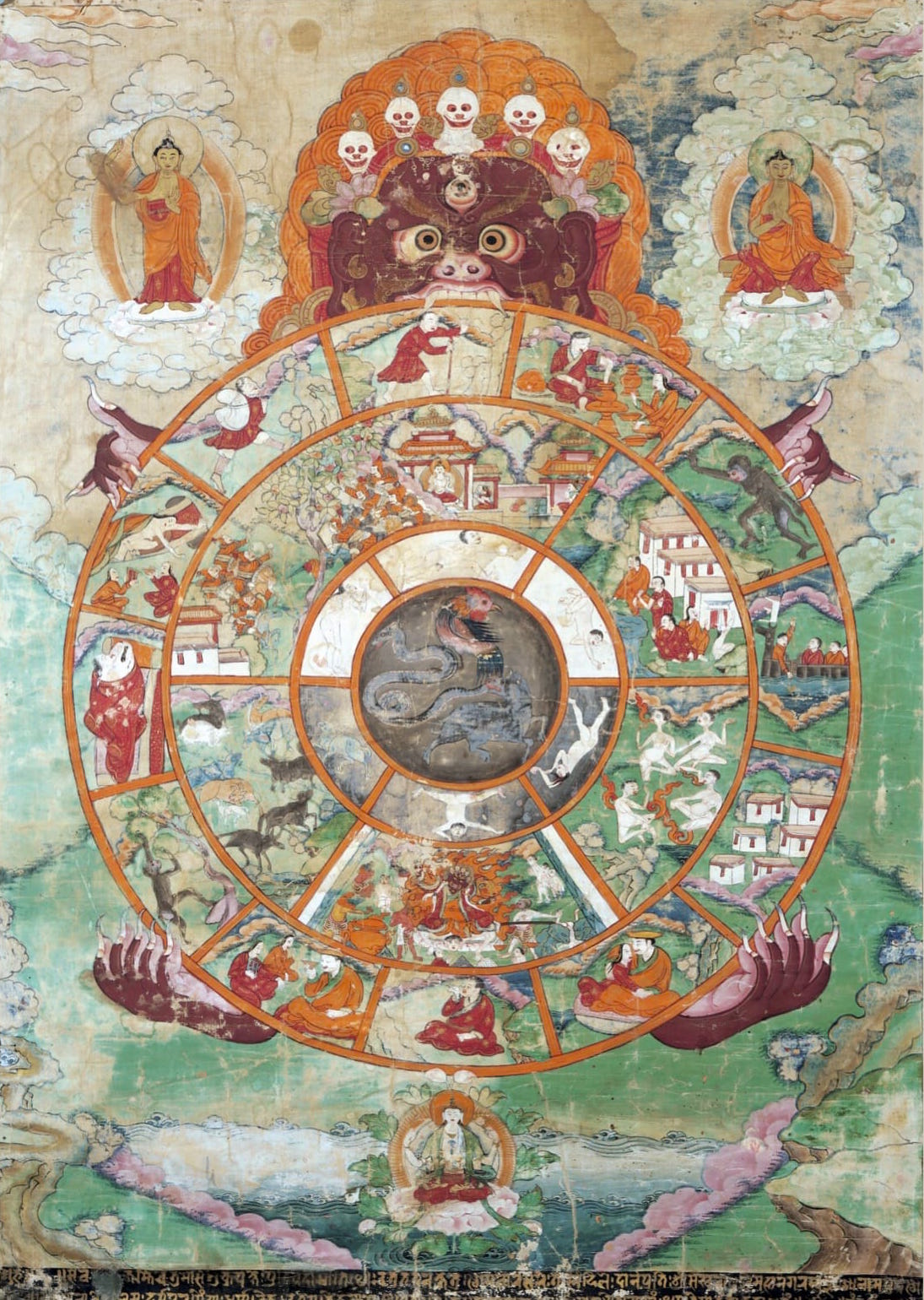
Hindu speculations on cyclical time show with sufficient insistence the "Refusal of history". We underline, however, a fundamental difference between these and the archaic conceptions; while the man of traditional cultures rejects history by means of the periodic abolition of creation, thus reliving incessantly in the timeless instant of its beginnings, the Hindu spirit, in its supreme tensions, also debases and rejects this re-actualization of the auroral time, which does not see it more as an effective solution to the problem of suffering. The difference between the Vedic vision (therefore archaic and "primitive") and the Mahayana vision of the cosmic cycle is, to use a summary formula, the same that distinguishes the archetypal (traditional) anthropological position from the existentialist (historical) position.
Il karma, law of universal causality, which, justifying the human condition and explaining historical experience, could have been a generator of consolation for the pre-Buddhist Hindu conscience, over time becomes the the very symbol of man's "slavery". For this reason, to the extent that the liberation of man is proposed, all Hindu metaphysics and techniques seek the annulment of the karma. But if the doctrines of cosmic cycles were only an explanation of the theory of universal causality, we would be exempted from mentioning them here. The conception of the four Yuga in fact, it brings a new element: the explanation (and consequently the justification) of historical catastrophes, of the progressive decay of human biology, sociology, ethics and spirituality.
Time, by the simple fact that it has lasted, continually aggravates the cosmic condition and implicitly the human condition. For the simple fact that we currently live in kali yuga, therefore in an "age of darkness", which progresses under the sign of disintegration and must end in catastrophe, our destiny is to suffer more than men of previous "ages". Now, in our historical moment, we cannot devote ourselves to other things: at most (and here we glimpse the soteriological function of kali yuga and the privileges that a crepuscular and catastrophic history reserves for us) we can free ourselves from cosmic servitude.
The Hindu theory of the four ages is therefore invigorating and consoling for the man terrified of history. In fact: 1) on the one hand the sufferings that are assigned to him, since he is a contemporary of the crepuscular decomposition, help him to understand the precariousness of his human condition and thus facilitate his liberation; 2) on the other hand, the theory validates and justifies the sufferings of those who do not choose to free themselves, but resign themselves to enduring their existence, and this is due to the fact that they are aware of dramatic and catastrophic structure of the time in which it was given to live (or, more precisely, to relive).
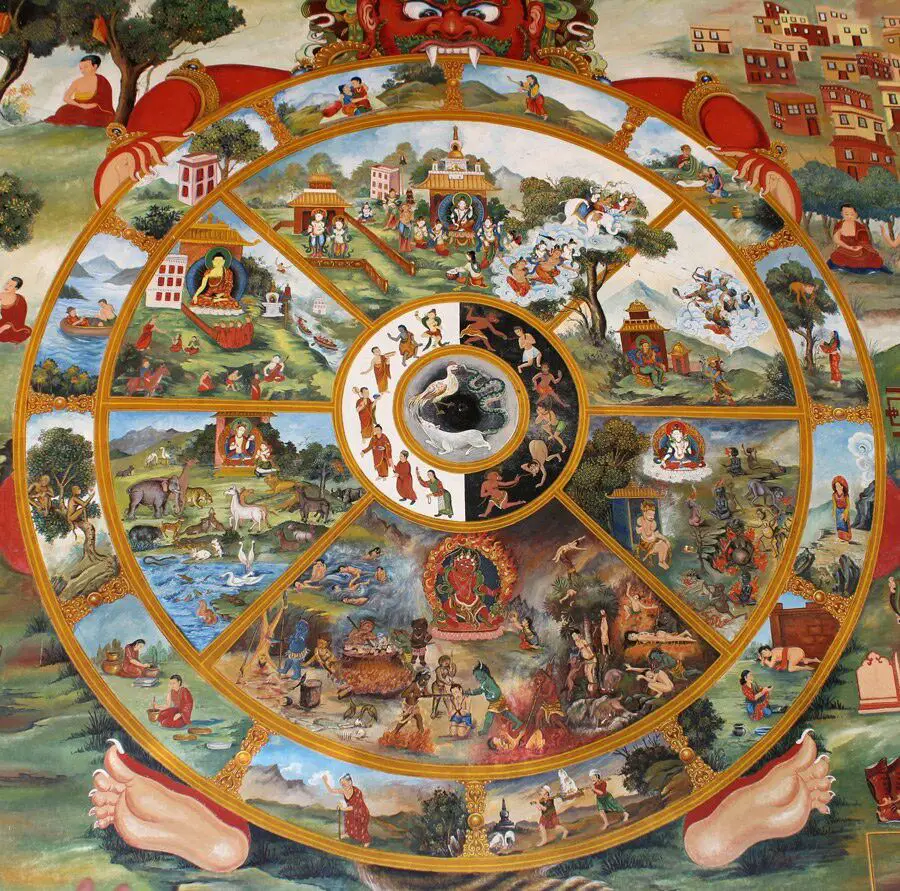
We are particularly interested in this second possibility for man to situate himself in an "age of darkness" and at the end of the cycle; in fact it is found in other cultures and in other historical moments. To bear to be contemporary with a disastrous epoch, becoming aware of the place occupied by this epoch in the descending trajectory of the cosmic cycle, it is an attitude that had above all to show its effectiveness in the twilight of the Greek-Eastern civilization. We do not have to deal here with the many problems raised by the Eastern-Hellenistic civilizations. The only aspect that interests us is the situation that the man of these civilizations discovers in the face of history, and more precisely in the face of history that is contemporary to him.
For this we will not linger on the origin, structure and evolution of the different cosmological systems, in which the ancient myth of cosmic cycles is taken up and deepened, nor on their philosophical consequences. We will remember these cosmological systems - from the Presocratic to the Neo-Pythagorean - only to the extent that they give an answer to the following problem: what is the meaning of history, that is, of the totality of human experiences caused by geographical fatalities, by social structures, by political conjunctures, etc?
We note from the beginning that this problem made sense only for a very small minority in the age of the Hellenistic-Eastern civilizations, only for those who found themselves detached from the horizon of archaic spirituality. The vast majority of their contemporaries still lived, especially in the beginning, under the regime of archetypes; he will come out of it only very late (and perhaps never definitively, as is the case, for example, for agricultural societies), during strong historical tensions caused by Alexander and which only end with the fall of Rome. But the philosophical myths and more or less scientific cosmologies developed by this minority, which begins with i pre-Socratics, with the time it knows an immense diffusion. What was a difficult to access gnosis in the XNUMXth century BC, becomes, four centuries later, a doctrine that comforts hundreds of thousands of men, as evidenced for example by the neo-Pythagoreanism and neostoicism in the Roman world. Certainly we are interested in all those Greek and Greco-Eastern doctrines, founded on the myth of cosmic cycles, for the "success" they obtained later and not for their intrinsic merit.
This myth was still transparent in early Presocratic speculations. Anaximander knows that all things are born and return toapeiron. Empedocle explains with the alternating supremacy of the gods two opposite principles Philia e neikos the eternal creations and destructions of the cosmos (cycles in which four phases can be distinguished, somewhat analogous to the four "incalculable" of the Buddhist doctrine). The universal conflagration […] is also accepted by Heraclitus. Regarding the "eternal return" — the periodic resumption by all beings of their previous existences - there is in it one of the rare dogmas of which we know, with some certainty, that they belonged to primitive Pythagoreanism (Dicearco, quoted by Porphyry, Pyth life., 19). Finally, according to recent research, admirably conducted and synthesized by J. Bidez, it seems increasingly probable that at least certain elements of the Platonic system are of Iranian-Babylonian origin.

We will return to these possible oriental influences; for now we focus on Plato's interpretation of the myth of the cyclical return, more precisely in the fundamental text, the Politico, 269c ff. Plato finds the cause of the regression and cosmic catastrophes in a double movement of the universe, of "... this universe, which is ours ... sometimes the divinity guides the whole of its circular resolution, sometimes it abandons it to itself, once the revolutions have reached in duration the measure that belongs to this universe; it then begins to turn again in the opposite direction, of its own motion… ».
The change of direction is accompanied by gigantic cataclysms: "The most considerable destructions, both among animals in general and in mankind, of which, as is right, only a small number of representatives survive" (270c). But this catastrophe is followed by a paradoxical "regeneration". Men begin to rejuvenate; «The white hair of the old men returns to black», etc., while those who were in puberty begin to decrease day by day in stature, to return to the dimensions of the newborn child, until, «continuing to wear out by now, they will be totally annihilated. The corpses of those who died then "disappeared completely, leaving no visible traces, in a small number of days" (270e).
Then the race of "children of the earth" was born (gegeneis), the memory of which was preserved by our ancestors (27la). In this'era of Cronos there were neither wild animals nor enmities among animals (27le). The men of this age had neither wives nor children: "On leaving the earth they all returned to life, without having retained any memory of the previous conditions of their existence". The trees gave them fruit in abundance and they slept naked on the ground, needing no beds, because then the seasons were mild (272a).
The myth of the primordial paradise, evoked by Plato, transparent in Hindu beliefs, is known both by the Jews (for example, illud tempus messianic in Is. 11,6,8; 65,25) and from the Iranian (Dinkard, 7,9,3-5, etc.) and Greco-Latin traditions. On the other hand, it fits perfectly into the archaic (and probably universal) conception of "Heavenly beginnings", which we find in all the enhancements ofillud tempus primordial. It is hardly surprising that Plato reproduces such traditional visions in his old age dialogues; the very evolution of his philosophical thought forced him to rediscover the mythical categories. He certainly had at hand the memory of the "golden age" of Cronos in the Hellenic tradition (cf. For example, the four ages described by Hesiod, Erga, 110 ff.).

Moreover, this observation does not at all prevent us from recognizing, even in Politic, certain Babylonian influences; when, for example, Plato attributes periodic cataclysms to planetary revolutions, an explanation that some recent researches derive from Babylonian astronomical speculations, later made accessible to the Hellenic world by Babylonian di Berosus. According to Timaeus, partial disasters are due to planetary deviation (cf. Timaeus, 22d and 23e, deluge recalled by the priest of Sais), while the moment of the reunion of all the planets is that of the "perfect time" (Timaeus, 39d), that is, at the end of the "great year". As J. Bidez notes, "The idea that it is enough for the planets to put all of them in conjunction to cause a universal reversal is certainly of Chaldean origin". On the other hand, Plato also seems to know the Iranian conception, according to which these catastrophes have as their purpose the purification of mankind (Timaeus, 22d).
- stoics they resumed speculations on cosmic cycles for their purposes, insisting both on eternal repetition (for example, Chrysippus, frag. 623-627), and on cataclysm, ekpyrosis, with which cosmic cycles end (already according to Zeno, fragments 98 and 109 von Arnim). Inspired by Heraclitus, or directly by Eastern gnosis, Stoicism vulgarizes all these ideas in relation to the "Great year" and with the cosmic fire (ekpyrosis), that periodically puts an end to the universe to renew it. Over time, the reasons for the "eternal return" and the end of the "world" end up dominating the entire Greco-Roman culture. The periodic renewal of the world (metacosmetics) it was on the other hand a favored doctrine of the neo-Pythagoreanism, which, as J. Carcopino has shown, shared the suffrages of the totality of Roman society in the XNUMXnd and XNUMXst centuries BC with Stoicism. of the apokatastasis (the term penetrates the Hellenic world after Alexander the Great), are two philosophical positions that allow us to glimpse a very firm anti-historical attitude, and also a desire to defend against history. We will focus on each of them.
We have observed [...] that the myth of eternal repetition, as reinterpreted by Greek speculation, has the sense of a supreme attempt at the "statization" of becoming, ofannihilation of the irreversibility of time. Since all moments and all situations of the cosmos repeat themselves indefinitely, their evanescence ultimately reveals itself as apparent; in the perspective of infinity, every moment and every situation remain still and thus acquire the ontological regime of the archetype. Therefore, of all forms of becoming, historical becoming is also saturated with being. From the point of view of eternal repetition, historical events are transformed into categories and thus they rediscover the ontological regime that they possessed in the horizon of archaic spirituality. In a sense it can also be said that the Greek theory of eternal return is the latest variant of the archaic myth of the repetition of an archetypal gesture, just as the Platonic doctrine of ideas was the latest version of the archetypal conception, and even the most elaborate. It is worth noting that these two doctrines found their fullest expression at the apogee of Greek philosophical thought.
But above all the myth of the universal conflagration it has achieved notable success throughout the Eastern Greek world. It seems increasingly probable that the myth of an end of the world by means of fire, from which the good will come out unscathed, is of origin Iranian (see for example Bundahishn, 30,18), at least in the form known by the "western magi" who, as Cumont demonstrated, spread it in the West. Stoicism, the Sibylline oracles (for example, 2,253) and the Judeo-Christian literature make this myth the very basis of their apocalypse and their eschatology. As curious as it may seem, this myth was comforting; in fact, fire renews the world, through it a "new world will be restored, subtracted from old age, death, to decay and putrefaction, which will live eternally, which will grow eternally, when the dead rise again, immortality will be given to the living and the world will be renewed, according to the wishes "(Yasht, 19,14,89, trans. Darmesteter). It is therefore a apokatastasis from which the good have nothing to fear. The final catastrophe will put an end to history, and thus will reintegrate man into eternity and bliss.
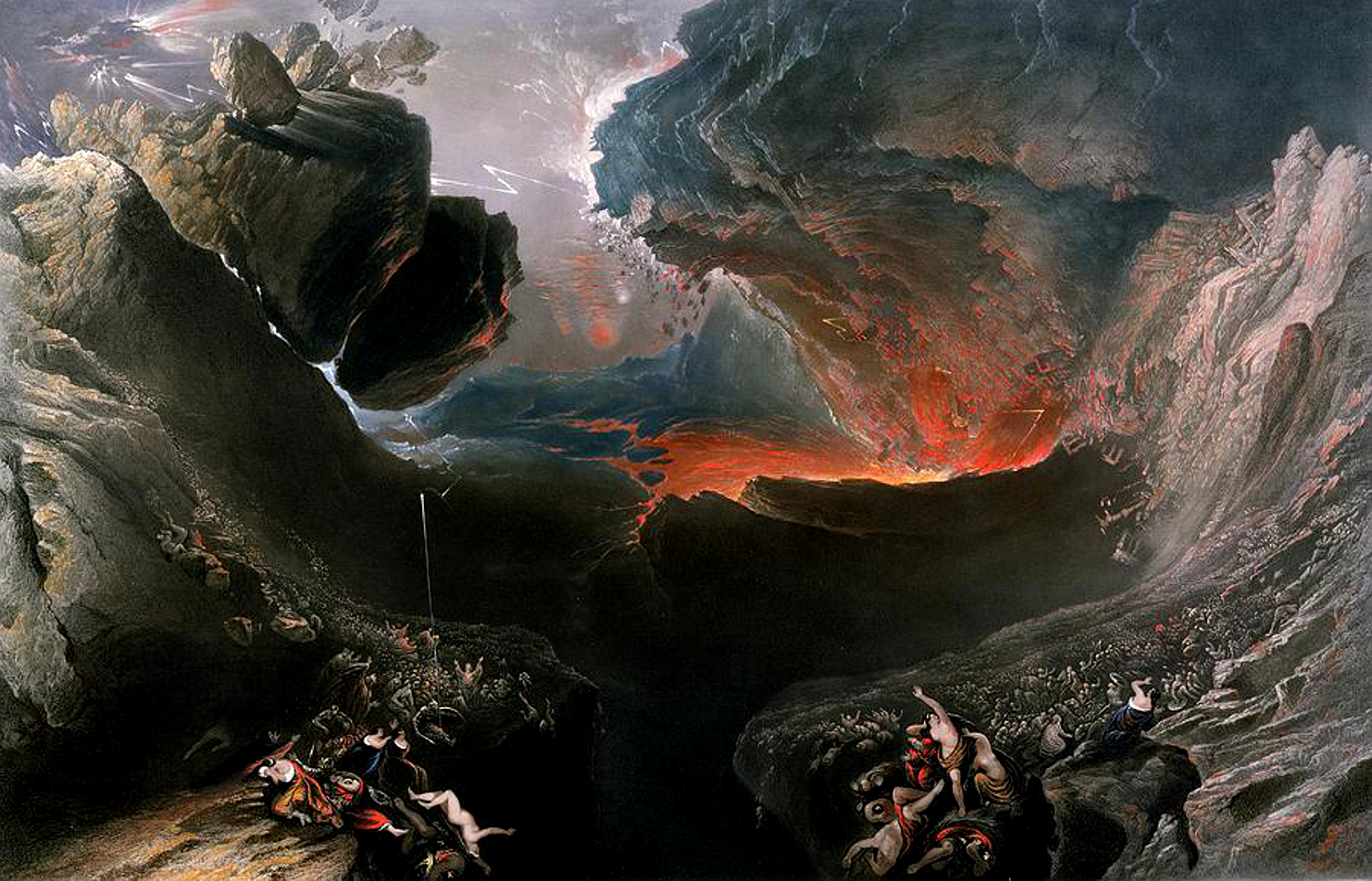
The recent researches of F. Cumont and HS Nyberg have come to lighten a little the obscurity of Iranian eschatology and to clarify its influences on the Judeo-Christian apocalypse. Like India (and, in a sense, Greece), Iran knew the myth of the four cosmic ages. A lost Mazdean text, the Sudkarnask (whose content has been preserved in Dìnkart, 9, 8), spoke of four ages: gold, silver, steel and "mixed iron". The same metals are mentioned at the beginning of Bahman-yasht (1,3), which however soon after (2,14) describes a seven-branched cosmic tree (of gold, silver, bronze, copper, tin, steel and a "mixture of iron"), which corresponds to the sevenfold mythical history of the Persians. This cosmic ebdomada is undoubtedly constituted in relation to the Chaldean astrological doctrines in which each planet "dominates" a millennium.
But the mazdeism had proposed a duration of 9000 years (3 × 3000) for the universe well before, while it zervanism, as Nyberg has shown, has brought the upper limit of the life span of this universe to 12.000 years. In the two Iranian systems - as indeed in all the doctrines of cosmic cycles - the world will end by means of fire and water, for pyrosim et cataclysmum, as Firmicus Maternus later wrote (3,1). That in the Zervanite system the "unlimited time", zrvan akarana proceed and follow the 12.000 years of "limited time" created by Ormazd; that in this system "time is more powerful than the two creations" (Bundahishn, c. l), that is, of the creations of Ormazd need Ahriman; that consequently Zrvan akarana it was not created by Ormazd and is therefore not subordinate to him - these are problems that we can exempt from addressing here. We just want to underline that in the Iranian conception, whether or not it is followed by infinite time, history is not eternal; it does not repeat itself, but will end one day by the work of one ekpyrosis and an eschatological cataclysm, since the final catastrophe, which will put an end to history, will at the same time be a judgment on this history. So - in illo tempore - all will give an account of what they have done "in history" and only those who are not guilty will know bliss and eternity.
Windisch showed the importance of these Mazdean ideas for the Christian apologist Lactantius. The world was created by God in six days, and the seventh rested; for this, the world will last six eons, during which "evil will conquer and triumph" on earth. During the seventh millennium the prince of demons will be chained and humanity will experience a thousand years of rest and complete justice. After that the devil will free himself from his chains and will resume the war against the righteous; but ultimately it will be overcome and, at the beginning of the eighth millennium, the world will be recreated for eternity. Evidently this subdivision of the story into three acts and eight millennia it was also known by the Christian Chiliasts, but its Iranian structure cannot be doubted, even if a similar eschatological vision of history has been spread throughout the Mediterranean East and in the Roman Empire by the Greek-Oriental gnoses.
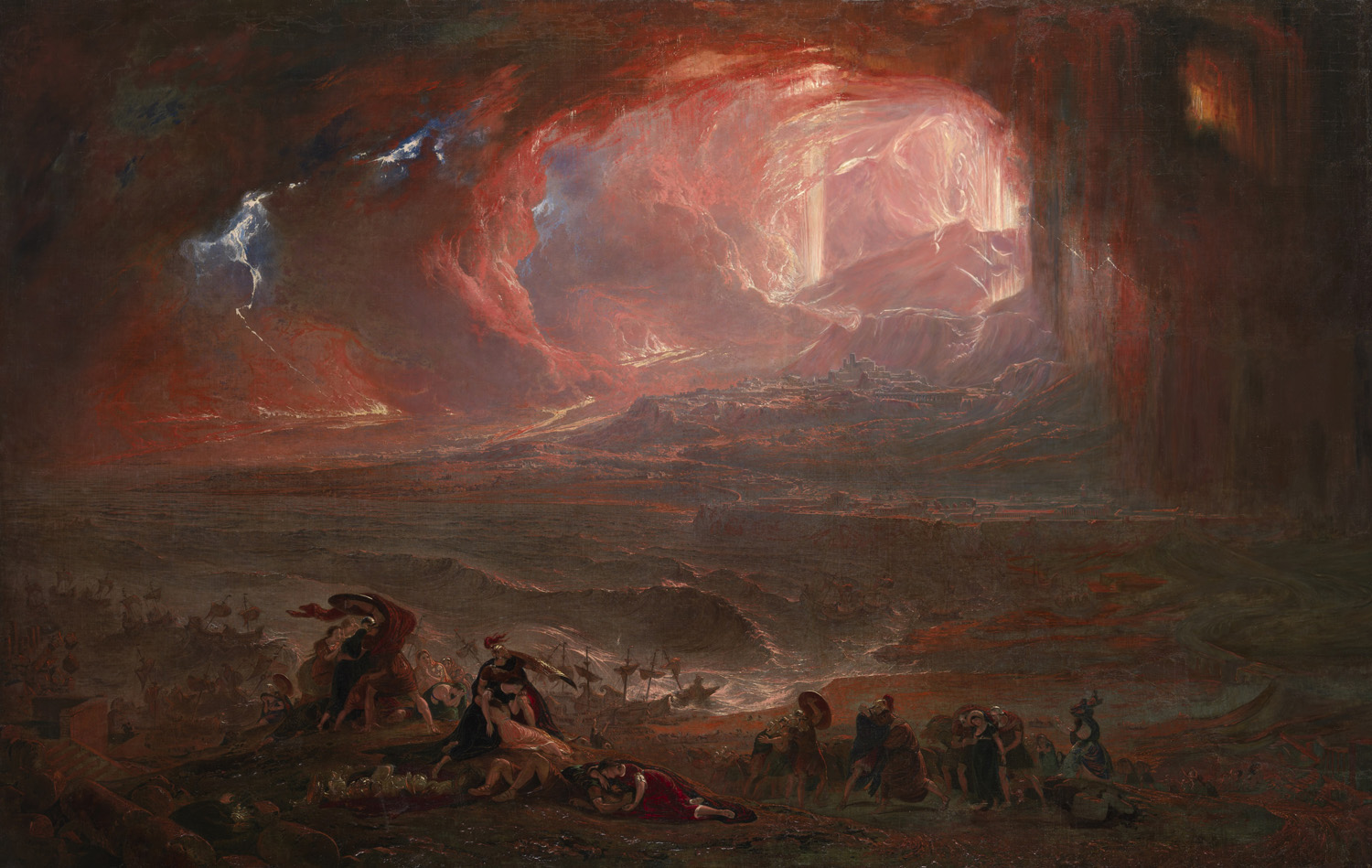
A series of calamities will herald the approach of the end of the world and the first of these will be the fall of Rome and the destruction of the Roman Empire, a common prediction in theJudeo-Christian apocalypse, but which was also known to the Iranians. On the other hand, the apocalyptic syndrome is common to all these traditions. Lactantius, just like the Bahman-yasht, announces that "The year will be shortened, the month will decrease, and the day will contract", vision of cosmic and human deterioration that we have also found in India (where human life passes from 80.000 to 100 years) and that the astrological doctrines they popularized in the Eastern Greek world. Then the mountains will collapse and the earth will become smooth, men will long for death, they will envy the dead, and only a tenth of them will survive.
"It is a time," Lactantius writes (Institute., 7,17, 9), "in which justice will be rejected and innocence will be hateful, in which the wicked will exercise their hostile robberies against the good ones, in which order, law and military discipline will no longer be respected, in which no one will respect white hair, will perform their duties of piety, will have compassion for the woman or of the child, etc. " But after this precursor stage the purifying fire will descend which will annihilate the wicked and be followed by the millennium of bliss that also awaited the Christian Chiliasti and which had already announced Isaiah and Sibylline oracles. Men will know a new golden age, which will last until the end of the seventh millennium: in fact, after this last fight, one ekpyrosis universal will reabsorb the entire universe into fire and this will allow the birth of a new, just, eternal and happy world, not subject to astral influences and freed from the realm of time.
Even the Jews limited the duration of the world to seven millennia (see for example Testamentum Abraham, Enochi ethics, etc.), but the rabbis never encouraged the determination of the end of the world with mathematical calculations. They contented themselves with pointing out that a series of cosmic and historic calamitiesand (famines, droughts, wars, etc.) will herald the end of the world. Then the Messiah will come: the dead will rise again (Is. 26,19), God will overcome death and the renewal of the world will follow (Is. 65,17; also Jubil, 1,29, speaks of a new creation). Here too, as everywhere in the apocalyptic doctrines mentioned above, we find the traditional motif of the extreme decay, the triumph of evil and darkness, which precede the change of Aeon and the renewal of the cosmos. A Babylonian text translated by A. Jeremias predicts the apocalypse in this way: "When these things happen in the sky, then what is clear will become opaque and what is clean will become dirty, confusion will spread over the nations, they will not feel more prayers, the auspices will prove unfavorable… ». "Under such a kingdom men will devour each other and sell their children for money, the bridegroom will abandon his bride and the bride her bridegroom, and the mother will close the door to her daughter."
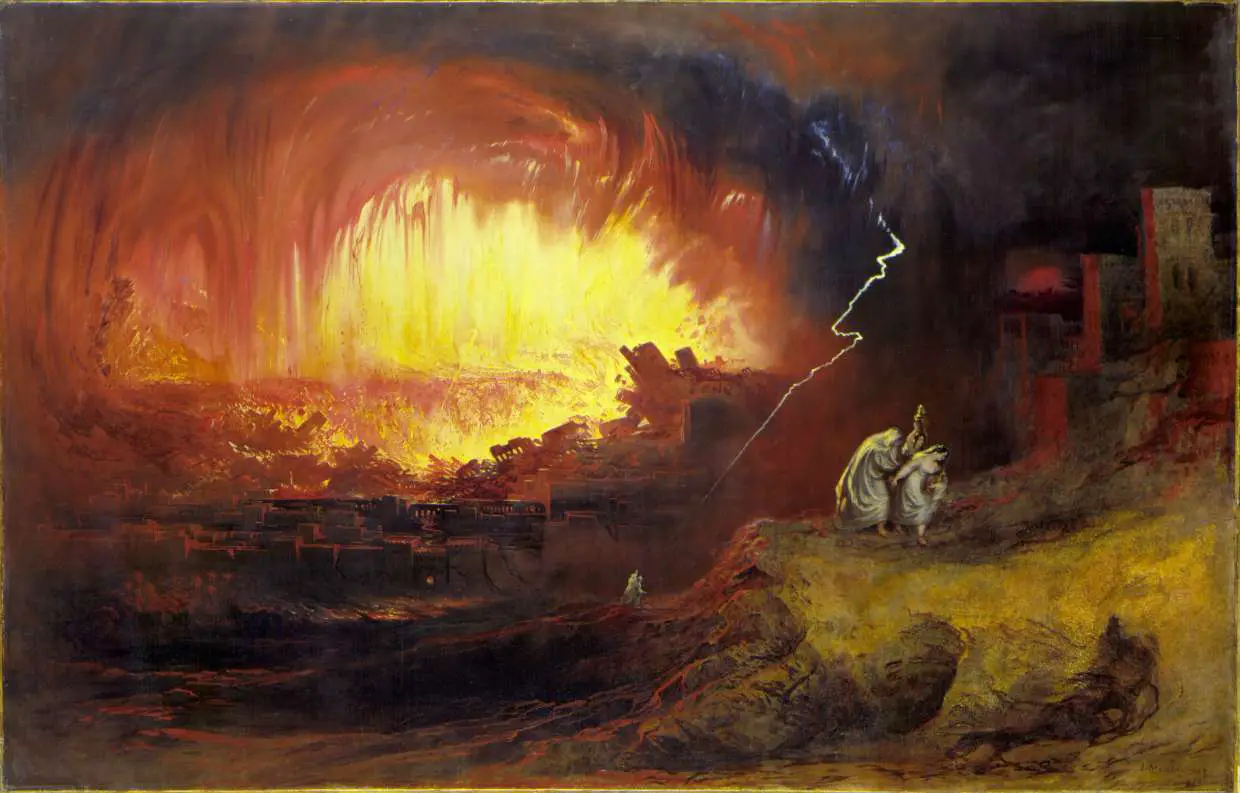
Another hymn announces that then the sun will no longer rise, the moon will no longer appear, etc. But in the Babylonian view this twilight period is always followed by a new heavenly dawn. Often, as expected, the paradisiacal period opens with the enthronement of a new ruler. Ashurbanipal regards himself as a regenerator of the cosmos, since "after the gods, in their goodness, placed me on the throne of my fathers, Adad sent his rain ..., the wheat sprouted ..., the harvest was abundant ..., the herds multiplied, etc ... ". Nebuchadrezzar says of himself: "I make sure that there is a kingdom of abundance, years of exuberance, of prosperity in my country." In a Hittite text Murshilish expresses himself thus on the reign of his father: "... Under him all the territory of Khatti prospered, during his reign the people, the cattle, the sheep multiplied". The conception is archaic and universal; it is found in Homer, in Hesiod, in the Old Testament, in China, etc.
Quite simply it could be said that, both for Iranians and for Jews and Christians, the "history" assigned to the universe is limited and that the end of the world coincides with the annihilation of sins, with the resurrection of the dead and the victory of eternity over time. But even if this doctrine becomes more and more popular in the first century BC and in the first centuries AD it does not definitively eliminate the traditional doctrine of the periodic regeneration of time by means of the annual repetition of creation. […] Vestiges of this doctrine have been preserved among the Iranians until an advanced date in the Middle Ages. Dominant also in premessianic Judaism, this doctrine has therefore never been totally abolished, since the rabbinical circles hesitated to specify the duration fixed by God to the cosmos, and were content to affirm that theillud tempus one day would certainly come.
In Christianity, on the other hand, the evangelical tradition already suggests that BASILE TOU TEOU is already present "in between" (ENTOS) to those who believe, and that consequently theillud tempus it is eternally current and accessible to anyone, at any time, for half a year. Since it is a question of a religious experience totally different from the traditional experience, since it is a question of "faith", the periodic regeneration of the world translates in Christianity into a regeneration of the human person. But for the one who participates in that eternal now of the kingdom of God, "history" ceases completely, as for the man of archaic cultures who periodically abolishes it. Consequentially for the Christian too, history can be regenerated by each believer in particular and through him, even before the second coming of the Savior, when it will cease in an absolute way for all creation.
An adequate discussion of the revolution introduced by Christianity in the dialectic of the abolition of history and the escape from the dominion of time would lead us too far beyond the limits of this essay. We only note that, also within the framework of the three great Iranian, Jewish and Christian religions, which have limited the duration of the cosmos to a certain number of millennia, and affirm that history will definitively cease in illo tempore, however, there are still traces of the ancient doctrine of the periodic regeneration of history. In other words, history can be abolished, and consequently renewed, a considerable number of times before the realization of theeschaton the final. The Christian liturgical year is in fact founded on a periodic and real repetition of the nativity, passion, death and resurrection of Jesus, with all that this mystical drama it entails for a Christian, that is personal and cosmic regeneration through the actualization of the birth, death and resurrection of the Savior.


4 comments on “Mircea Eliade: "Cosmic cycles and history""